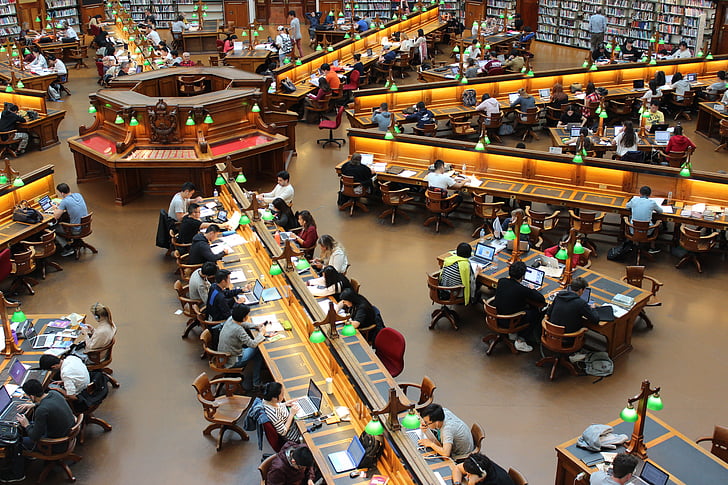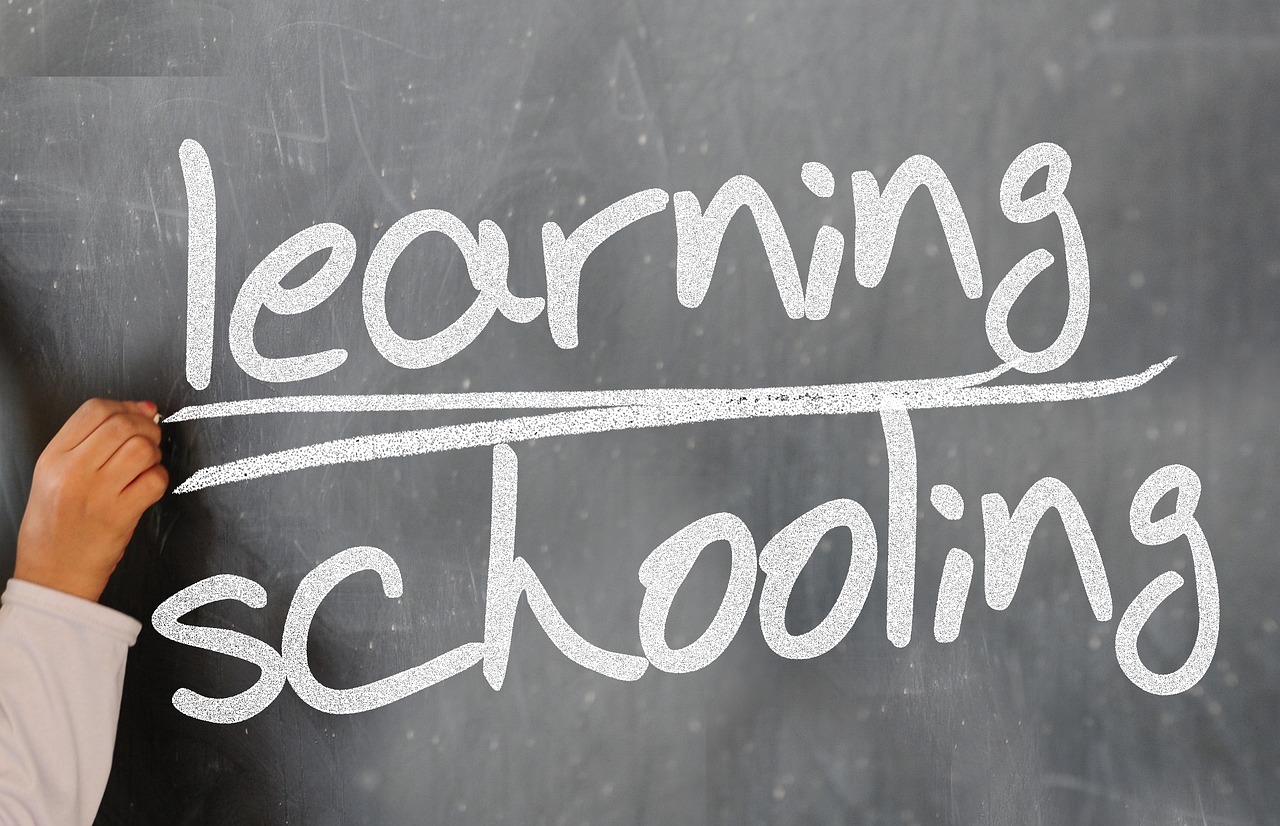What is the Education System in the UK?
In Britain, the education system consists of five components: early years, primary, secondary, Further Education (FE), and Higher Education (HE). All children aged 5 (or 4 in Northern Ireland) – middle school ages are legally required to go to school.
On the other hand, Further Education (FE) is not a must. It includes some aspects of education that are typically below the degree level of schooling in further education colleges or tertiary education institutions. It is usually situated after secondary education and generally incorporates vocational training or includes A-level courses.
Higher Education (HE) is when one is expected to study for qualifications above GCE A levels or equivalents. This stage is mainly done in universities and other higher education institutions (HEI) where students are registered for undergraduate or postgraduate courses.
How Does the UK Education System Work?
The education system in the UK is structured into four main levels: primary education, secondary education, further education, and higher education. It is also organized into “key stages of the British school education system,” which break down as follows:
- Key Stage 1: Ages 5 to 7
- Key Stage 2: Ages 7 to 11
- Key Stage 3: Ages 11 to 14
- Key Stage 4: Ages 14 to 16
Each key stage builds on the previous one, with assessments at the end of each stage, particularly during Key Stage 4 when students take their GCSE exams, a crucial part of their educational journey.
Key Stages in UK Education System
In the UK education system, key stages are benchmarks for tracking students’ development and offering a systematic framework for their academic path. With necessary examinations intended to gauge students’ achievement and growth, each critical Stage is associated with particular age ranges and year groups. These evaluations include teacher assessments, standardized exams, and other credentials specific to the learning subjects in school of each Key Stage. Each Key Stage and what it evaluates are broken down in the table below:
| Key Stage (KS) | Year Groups | Age Range | Key Assessments |
|---|---|---|---|
| KS1 | Year 1 to Year 2 | 5 to 7 years old | Phonics Screening Check, Teacher-Led Assessments, Reading, Writing, Maths, Science |
| KS2 | Year 3 to Year 6 | 7 to 11 years old | Key Stage 2 SATs (Standard Assessment Tests) in English and Maths, Teacher Assessments |
| KS3 | Year 7 to Year 9 | 11 to 14 years old | Teacher-Led Assessments, Progress Tests (internal assessments) |
| KS4 | Year 10 to Year 11 | 14 to 16 years old | General Certificate of Secondary Education (GCSE) exams in various subjects, including English, Maths, and Science, Other GCSE or equivalent qualifications, Teacher-Led Assessments |
| KS5 | Years 12 to 13 | 16 to 18 years old | A-Levels (Advanced Levels); BTEC (Business and Technology Education Council) Qualifications; Other Vocational Qualifications (NVQs) including Cambridge Technicals; IBs (International Baccalaureate) |
Key Stage 1
In the UK education system, Key Stage 1 covers Years 1 and 2 for students ages 5 to 7. It emphasizes the development of fundamental literacy and numeracy abilities. It introduces disciplines like science, art, and physical education and teaches essential reading, writing, and math to promote a well-rounded and comprehensive early education.
Key Stage 2
Key Stage 2 builds on the reading and numeracy foundations in Key Stage 1, which covers Years 3 to 6 for pupils aged 7 to 11. It broadens to cover topics like physics, geography, history, art, music, and physical education, emphasizing the development of critical thinking abilities, problem-solving techniques, and a deeper comprehension of fundamental academic ideas.
Key Stage 3
Usually found in secondary school, Key Stage 3 encompasses Years 7 through 9 for pupils between 11 and 14. In addition to history, geography, contemporary foreign languages, art, music, design and technology, physical education, and computing, it enhances understanding and proficiency in fundamental topics like science, arithmetic, and English. This level attempts to expand their intellectual horizons to prepare pupils for more specialized study in Key Level 4.
Key Stage 4
Key Stage 4, which includes Years 10 and 11 for students between the ages of 14 and 16, is a crucial phase that leads to the General Certificate of Secondary Education (GCSE) exams. Usually, in addition to fundamental subjects like science, math, and English, students can select areas that interest them. GCSEs cover various topics, such as languages, the arts, humanities, and vocational training. This phase allows students to customize their education to fit their interests and long-term goals, laying the groundwork for subsequent coursework or career entry.
Key Stage 5
Key Stage 5, encompassing Years 12 and 13 for students aged 16 to 18, emphasizes advanced-level exams such as A-Levels, BTECs, and the International Baccalaureate (IB) Diploma Programme. Students usually specialize in three to four disciplines to further explore their academic interests and career goals. Depending on the certification, assessment techniques might vary, although they frequently involve a mix of coursework and final exams. Key Stage 5 equips pupils with advanced academic and vocational skills that prepare them for jobs, apprenticeships, or higher education.
Level of Education in UK Education System

Early Years Education
In England since September 2010, all three and four year olds are entitled to 15 hours of free nursery education for 38 weeks of the year. Early Years education takes place in a variety of settings including state nursery schools, nursery classes and reception classes within primary schools, as well as settings outside the state sector such as voluntary pre-schools, privately run nurseries or childminders.
In recent years there has been a major expansion of Early Years education and childcare. The Education Act 2002 extended the National Curriculum for England to include the Foundation Stage which was first introduced in September 2000, and covered children’s education from the age of 3 to the end of the reception year, when children are aged 5. The Early Years Foundation Stage (EYFS) came into force in September 2008, and is a single regulatory and quality framework for the provision of learning, development and care for children in all registered early years settings between birth and the academic year in which they turn 5. The EYFS Profile (EYFSP) is the statutory assessment of each child’s development and learning achievements at the end of the academic year in which they turn 5.
Primary Education
The primary stage covers three age ranges: nursery (under 5), infant (5 to 7 or 8) (Key Stage 1) and junior (up to 11 or 12) (Key Stage 2) but in Scotland and Northern Ireland there is generally no distinction between infant and junior schools. In Wales, although the types of school are the same, the Foundation Phase has brought together what was previously known as the Early Years (from 3 to 5-year-olds) and Key Stage 1 (from 5 to 7-year-olds) of the National Curriculum to create one phase of education for children aged between three and seven. In England, primary schools generally cater for 4-11 year olds.
Secondary Education
In England, public provision of secondary education in an area may consist of a combination of different types of school, the pattern reflecting historical circumstance and the policy adopted by the local authority. Comprehensive schools largely admit pupils without reference to ability or aptitude and cater for all the children in a neighbourhood, but in some areas they co-exist with other types of schools, for example grammar schools. Academies, operating in England, are publicly funded independent schools. Academies benefit from greater freedoms to help innovate and raise standards. These include freedom from local authority control, the ability to set their own pay and conditions for staff, freedom around the delivery of the curriculum and the ability to change the lengths of terms and school days.
In Wales, secondary schools take pupils at 11 years old until statutory school age and beyond. Education authority secondary schools in Scotland are comprehensive in character and offer six years of secondary education; however, in remote areas there are several two-year and four-year secondary schools.
At the end of this stage of education, pupils are normally entered for a range of external examinations. Most frequently, these are GCSE (General Certificate of Secondary Education) in England, Wales and Northern Ireland and Standard Grades in Scotland, although a range of other qualifications are available.
Further Education
Further education may be used in a general sense to cover all non-advanced courses taken after the period of compulsory education. It is post-compulsory education (in addition to that received at secondary school), that is distinct from the education offered in universities (higher education). It may be at any level from basic skills training to higher vocational education such as City and Guilds or Foundation Degree.
A distinction is usually made between FE and higher education (HE). HE is education at a higher level than secondary school. This is usually provided in distinct institutions such as universities. FE in the United Kingdom therefore includes education for people over 16, usually excluding universities. It is primarily taught in FE colleges, work-based learning, and adult and community learning institutions. This include post-16 courses similar to those taught at schools and sub-degree courses similar to those taught at higher education (HE) colleges (which also teach degree-level courses) and at some universities.
Higher Education
Higher education is defined as courses that are of a standard that is higher than GCEA level, the Higher Grade of the SCE/National Qualification, GNVQ/NVQ level 3 or the Edexcel (formerly BTEC) or SQA National Certificate/Diploma. There are three main levels of HE course:
- Postgraduate courses leading to higher degrees, diplomas and certificates(including Doctorate, Masters (research and taught), Postgraduate diplomas and certificates as well as postgraduate certificates of education (PGCE) and professional qualifications) which usually require a first degree as entry
- Undergraduate courses which include first degrees (honours and ordinary), firstdegrees with qualified teacher status, enhanced first degrees, first degrees obtained concurrently with a diploma, and intercalated first degrees (where first degree students, usually in medicine, dentistry or veterinary medicine, interrupt their studies to complete a one-year course of advanced studies in a related topic).
- Other undergraduate courses which include all other higher education courses,for example SVQ or NVQ: Level 5, Diploma (HNC/D level for diploma and degree holders), HND (or equivalent), HNC (or equivalent) and SVQ or NVQ: Level 4 and Diplomas in HE.
As a result of the Further and Higher Education Act 1992, former polytechnics and some other HEIs were designated as universities in 1992/93. Students normally attend HE courses at HEIs, but some attend at FE colleges.
Types of school in UK Education System

State-funded schools
Some 93% of children between the ages of 3 and 18 are in education in state-funded schools without charge. All schools are legally required to have a website where they must publish details of their governance, finance, curriculum intent and staff and pupil protection policies.
- Academy schools, established by the 1997-2010 Labour Government to replace poorly-performing community schools in areas of high social and economic deprivation.Some such schools operate selective entrance requirements for some of their entry, similar to grammar schools.
- Community schools, in which the local authority employs the schools’ staff, owns the schools’ lands and buildings, and has primary responsibility for admissions.
- Free schools, introduced by the Conservative-Liberal Democrat coalition, are newly established schools in England set up by parents, teachers, charities or businesses, where there is a perceived local need for more schools. They are funded by taxpayers, are academically non-selective and free to attend, and like Foundation schools and Academies, are not controlled by a local authority.
- Foundation schools, in which the governing body employs the staff and has primary responsibility for admissions. School land and buildings are owned by the governing body or by a charitable foundation. The foundation appoints a minority of governors.
- Voluntary Aided schools, linked to a variety of organisations. They can be faith schools (about two thirds Church of England-affiliated; just under one third Roman Catholic Church, and a few another faith), or non-denominational schools, such as those linked to London Livery Companies.
- Voluntary Controlled schools, which are almost always faith schools, with the lands and buildings often owned by a charitable foundation.
- University technical colleges (UTCs), introduced by the Conservative-Liberal Democrat coalition in 2010. These are sponsored by a university and have close ties to local business and industry. They are funded by the taxpayer, and are non-selective, free to attend and not controlled by a local authority. The university and industry partners support the curriculum development of the UTC, provide professional development opportunities for teachers, and guide suitably qualified students to industrial apprenticeships, foundation degrees or full degrees.
Private schools
Approximately 7% of school children in England attend privately run, fee-charging private schools. Some independent schools for 13–18-year-olds are known for historical reasons as ‘public schools’ and for 8–13-year-olds as ‘prep schools’. Some schools offer scholarships for those with particular skills or aptitudes, or bursaries to allow students from less financially well-off families to attend. Independent schools do not have to follow the National Curriculum, and their teachers are not required or regulated by law to have official teaching qualifications. The Independent Schools Inspectorate regularly publishes reports on the quality of education in all independent schools.
Types of degrees in UK Education System
Undergraduate degrees
A bachelor’s degree entails in-depth study of one or occasionally two areas. It is a level 6 degree (level 9 or 10 in Scotland) and the most popular undergraduate degree in the UK. Common categories consist of:
- Bachelor of Arts (BA)
- Bachelor of Science (BSc)
- Bachelor of Education (BEd)
- Bachelor of Engineering (BEng)
- Bachelor of Laws (LLB)
- Bachelor of Medicine, Bachelor of Surgery (MB ChB)
It usually takes three years if you are enrolled full-time. Specific courses can last four years, including a placement year or a year abroad. It can take up to five or six years to complete some courses, such as veterinary science, dentistry, or medicine. If you study part-time, it will take longer to earn your degree.
Specific courses offer the opportunity to take a break from the main undergraduate program to pursue an intercalated degree, a separate certification. This might be a possibility if you are a dental or medical student. It implies that you could complete your education and earn two degrees. A master’s-level credential is included in an undergraduate degree through an integrated master’s course. Typically, courses last four years, culminating in a postgraduate year of study.
UK students studying at a UK university will pay no more than £9,250 per year. Tuition fees for international students range between £12,500 and £37,293 per year. Clinical courses such as Medicine may have annual fees as high as £64,000.
Postgraduate degrees
The following academic level following an undergraduate degree is a postgraduate degree. In England and Wales, it may be a level 7 or level 8 qualification; in Scotland, it may be a level 11 or 12. Thanks to postgraduate degrees, you can specialize in a particular area of the subject you studied as an undergraduate. If you want to switch careers, conversion courses are also offered. There are two types of postgraduate degrees: “taught” and “research.” Like an undergraduate degree, taught degrees frequently include lectures, tutorials, and labs. Master’s degrees, postgraduate certificates, and diplomas are among the doctoral degrees that academic tutors teach. Common master’s degrees include:
- Master of Arts (MA)
- Master of Science (MSc)
- Master of Education (MEd)
- Master of Research (MRes)
- Master of Philosophy (MPhil)
- Master of Business Administration (MBA)
- Master’s Degree in Law (LLM)
Pursuing a master’s degree full-time typically takes one year; if studying part-time, it takes two years. A master’s degree is included in specific undergraduate courses. If enrolled full-time, these degrees are completed in four years.
Costs will vary based on what you choose to study and where. One year of a master’s degree could be anywhere between £4,950 and £41,500 for UK students, with higher prices for international students.
Conclusion
UK education System is analyzed detailedly in this blog serving as a comprehensive guide, helping you have a better command of UK. If you want choose UK as your dream educational destination, you ought to read this blog carefully.
After you have decided to go to UK for further education, accommodation is the first and foremost thing. uhomes.com is a platform providing affordable, reliable and comfortable student accommodation in UK.
FAQ
A high school diploma (sometimes referred to as a high school degree) is a diploma awarded upon graduation of high school.
Elementary school, or grade school (in North America and the UK) is a school for primary education of children who are 4 to 10 years of age (and in many cases, 11 years of age). Primary schooling follows preschool and precedes secondary schooling.
Across the UK there are five stages of education: early years, primary, secondary, Further Education (FE) and Higher Education (HE). Education is compulsory for all children between the ages of 5 (4 in Northern Ireland) and 16.
Additionally, the pedagogy in the UK emphasizes interactive teaching methods, critical analysis, and practical application of knowledge. In contrast, the Indian education system often follows a more rigid curriculum, with a prescribed set of subjects and limited flexibility for students to explore diverse fields.
All children in England between the ages of 5 and 16 are entitled to a free place at a state school. State schools receive funding through their local authority or directly from the government.
Based on national average statistics, most children educated in a British style are a year or more ahead of their US counterparts in math and language.
Key Stage 1 – Foundation year and Years 1 to 2 – for pupils aged between 5 and 7 years old. Key Stage 2 – Years 3 to 6 – for pupils aged between 8 and 11 years old. Key Stage 3 – Years 7 to 9 – for pupils aged between 12 and 14 years old, Key Stage 4 – Years 10 to 11 – for pupils aged between 15 and 16 years old, and.
Years twelve and thirteen comprise Key Stage 5. In England, students of Year 12 age must continue their education in some form, but this can be part-time as part of an apprenticeship or traineeship, or alongside work. In Wales, Year 12 is not part of compulsory education.
GCSE stands for General Certificate of Secondary Education. They are highly valued by schools, colleges and employers. The qualification mainly involves studying the theory of a subject, together with some investigative work, while some subjects also involve practical work.
A-Levels (short for Advanced levels) are UK national curriculum school-leaving qualifications that are taken by many students in the UK. Students usually choose three or four subjects, and take two years to study for these A-levels between the ages of 16 and 18.
The government. Each year, the government allocates money for all state-funded mainstream schools, including academies and council-run schools, using a formula that ensures funding is fair and reflects their pupils’ needs. This is called the National Funding Formula (NFF) which you can read more about here.
A boarding school is a school where pupils live within premises while being given formal instruction. The word “boarding” is used in the sense of “room and board”, i.e. lodging and meals.
Secondary school, also called high school or senior school, is for children between the ages of 11-16, and will take the student through year 7 to 11, as they complete Key Stage 3 and 4.
The International Baccalaureate (IB) diploma programmeThis is an academically challenging programme with final examinations that prepare students for university and working life. You choose one subject from each of five groups – including two languages, social sciences, experimental sciences, and mathematics.








